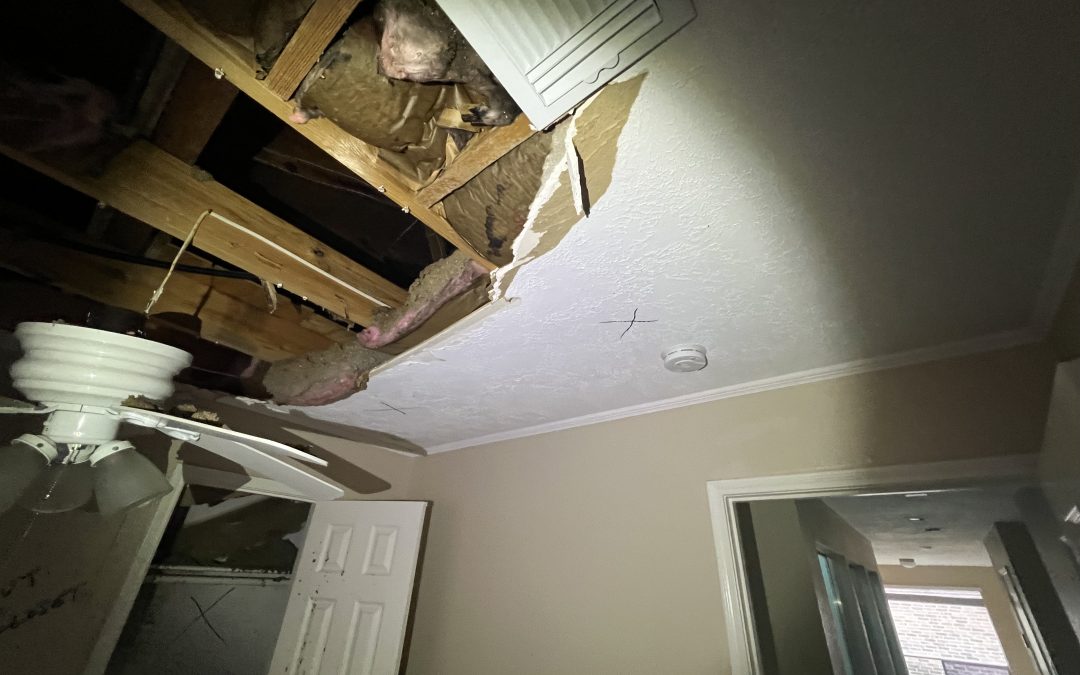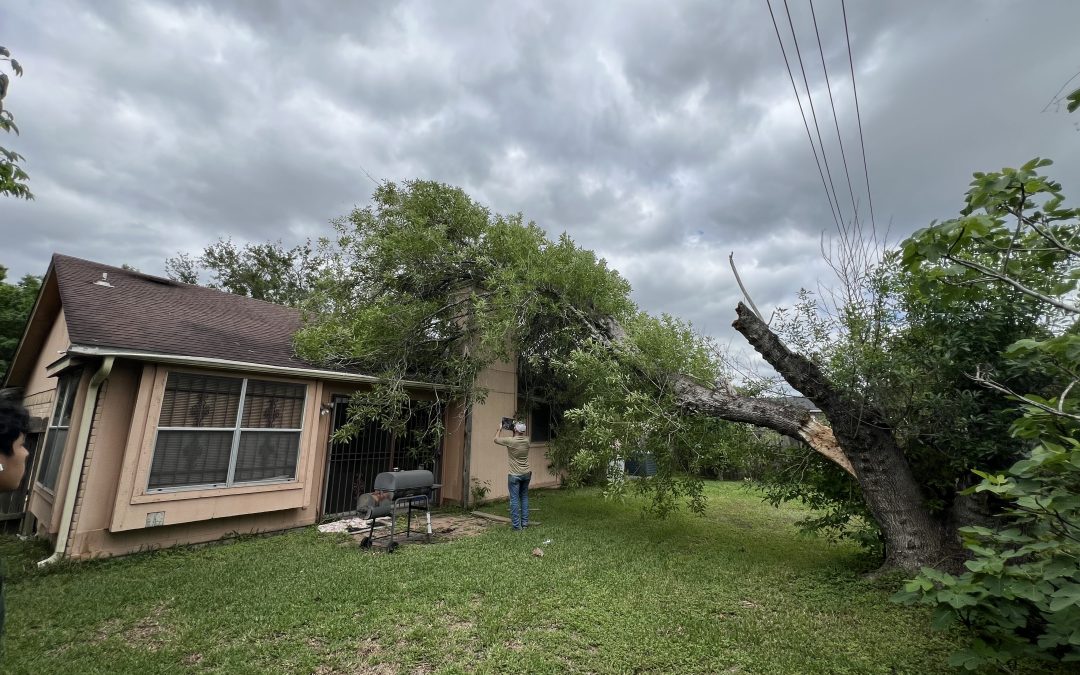Heavy rainfall and storms do not have to cause flooding for mold to grow in your home. Excessive dampness can encourage the growth of mold which can ruin furniture, grow in the walls, and exacerbate health problems for people who have asthma, allergies, and other conditions.
According to the Environmental Protection Agency (EPA), minor mold issues, those affecting 10 square feet or less, can be resolved by cleaning with a mixture of water and detergent. Bigger outbreaks typically require the help of a professional mold remediation service. However, understanding mold can help you prevent outbreaks.
Can you get mold in your house even if it doesn’t flood?
Mold can grow wherever there is moisture, even if there was never a flood. The CDC explains that mold can get into your home in any number of ways. Pipes, AC and heating systems, vents, doors, and windows can all allow damp air or water in so that mold can grow. A leaky roof, open door, or a leak around a window can also introduce moisture into the home.
Once inside, mold can grow just about anywhere:
- Ceiling tiles
- Fabric
- Wallpaper
- Wood
- Drywall
- Cardboard
- Carpet
- Dust
- Paper
- Paints
- Insulation
- Upholstery
Not all items respond well to the type of cleaning required to remove mold. In those cases, they will need to be discarded.
How do you get rid of dampness in your house after rain?
If you experience a lot of dampness in your home after a storm of rainfall, the first order of business is to dry it out as quickly as possible. Open your window and doors to get some air moving through the house. Then use dehumidifiers and fans to decrease the moisture. Use clean, dry towels to wipe down walls and furniture, removing as much moisture as you can. You can use forced air heaters or a blow dryer on some furniture or fabric fixtures in your home. However, not all of these items can be adequately dried. You may have to throw some items out. This is particularly true of porous items like carpeting, clothing, drywall, paper, carpet padding, food, and wood products.
How do you prevent mold after it rains?
Rain can cause a lot of moisture in the air, especially if it was a hard rainfall or an extended storm. Once the rain has stopped you can take steps to reduce dampness in your home. You can even proactively reduce dampness in your home while it is raining by running fans or heaters that will dry out the air. The key to preventing mold is reducing moisture in your home. Mold thrives on moisture so when you restrict it, the mold is unable to grow.
Any wet surfaces and items should be cleaned with water and detergent and items that are damaged need to be stored outside. If you are not claiming the mold on your insurance, then you can discard the items. Tougher mold growth can be removed by mixing 1 gallon of water and 1 cup of bleach. Larger areas or resistant mold should be dealt with by a professional.
Mold can be detrimental to your health as well as your home. Total Restoration can help you get rid of mold and find out where it is getting into your home so that you can take steps to prevent it. Contact us today to schedule a consultation and keep mold out of your home for good.




